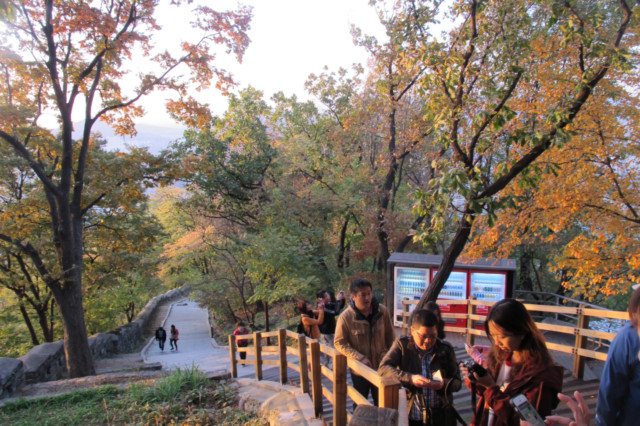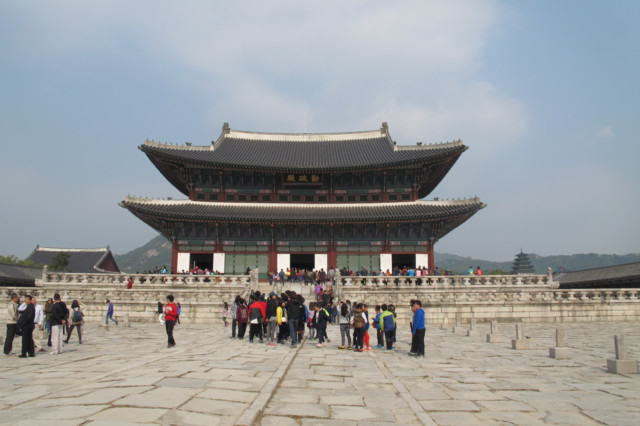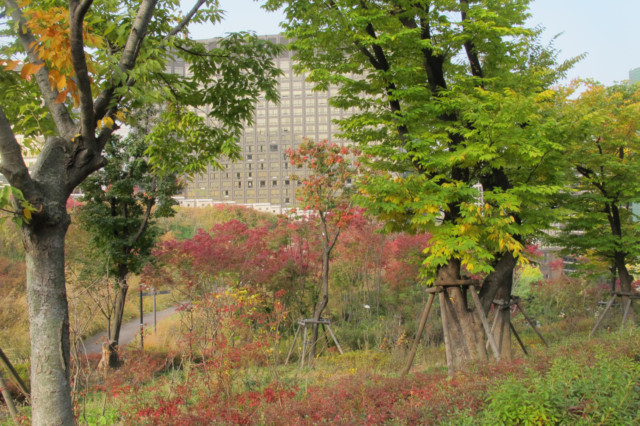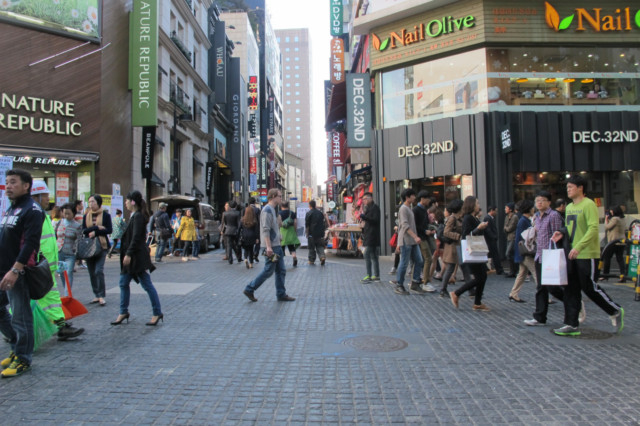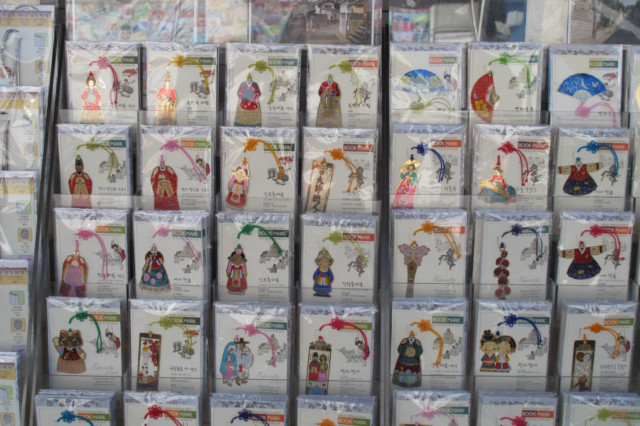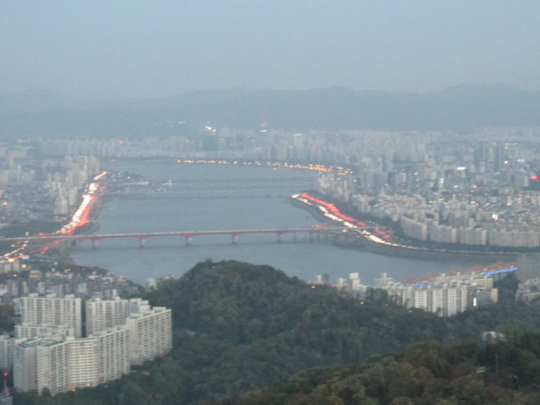
There’s more to Seoul than K-pop and Kimchi as I discovered during a fleeting visit to the South Korean capital recently. A vibrant city throbbing with energy, Seoul is a place where modernity comfortably shares space with ancient traditions. In the city to attend a conference, I took a day off to walk around and take in the sights.
8.30am
After breakfast at my hotel in Jung-gu, I walk over to the Namdaemun market, a large traditional market with hundreds of stores selling clothes, souvenirs, toys and bags.
It’s the best place to pick up eyeglasses — because they are cheap — and socks. Socks, did I say? Well, adorned with cute motifs, Korean socks are very high quality. Since almost every one picks up a pair or two while they are here, I buy a few pairs as well from the vendors displaying them on carts. At KRW1500 (Dh5.15) each, they are a steal.
I quickly exchange some more of my South Korean Won for a sweater, T-shirts, some toys and keepsakes. Wandering into one of the many lanes, I find myself inside a wholesale jewellery market with Korean girls sitting in their tiny shops and crafting fine jewellery.
At the self-service kiosk in Hoehyeon station, I buy a one-day Seoul Citypass for KRW15000. A nifty transportation card, it can be used on the buses and the subway for up to twenty times.
This is the most efficient and cost-effective way to explore the city as Seoul has nearly 400 subway stations in the metropolitan area and about 10,000 buses in operation. I hop on the metro to the next stop — Myeongdong.
10am
Right outside Myeongdong train station, I come across a huge dog handing out flyers advertising a dog café. Actually a guy wearing a dog suit.
My instinct is to follow his directions and visit this unique coffee shop where you can pet dogs while enjoying a drink but I get distracted by cute girls offering free samples of skin creams outside cosmetic stores. Myeongdong is popular with tourists as it is home to several skincare boutiques selling Korean cosmetics apart from the ubiquitous big international brands.
I goggle at a number of snail products, creams and face masks on offer. In the end, I just buy a couple of Green Tea face masks and By Flower BB Cream. I resist temptation to buy a pair of shoes as I want to save my cash to pick up paintings depicting traditional Korean life at Insadong, the next market on my itinerary.
11.30am
Just 100 metres from the Anguk station, Insadong is a charming neighbourhood which boasts of restaurants, art galleries, souvenir shops and antique shops.
Laden with bags, I realise it wasn’t a smart idea to start my day with shopping. So I buy a cloth bag for KRW13000 to stuff everything in it. My feeble attempt at bargaining was stymied when the young man selling them told me his mother made them by hand at home.
Insadong is without doubt the best place to buy traditional Korean souvenirs such as folding fans, ceramic ware, bookmarks and artwork. Later, I see some people crowding around a small stall on the main street. Literally selling them like hot cakes, the vendor is doling out hotteoks, a unique Korean snack made with wheat flour dough filled with sugar and powdered peanuts. At KRW1000, the decision to try one is a no-brainer.
At Insadong, I am a few metres away from Jongmyo, the oldest and most authentic of the Confucian royal shrines to have been preserved, according to Unesco. Unfortunately, I decide to skip a visit as I’m running out of time and I don’t want to miss an appointment to see the future.
1pm
T.um — SK Telecom’s technology museum — is located in the Euljiro area, the centre of Seoul. Before starting the one-hour tour, the pretty ladies at the information desk give me a T.key, a mobile handset designed for a personalised experience at all of T.um’s services.
A guided tour demonstrates how technology will be driving daily lives in the near future. For instance, at T.driving visitors are invited to get into futuristic cars and experience various new services, including a network system between cars, multimedia video communication, online banking and shopping.
This whole experience is so awesome that I am not sure if I can translate it accurately into words. Simply put, you have to be there. There is no charge to visit T.um but online reservation at least one day prior to your visit is mandatory.
2.30pm
Built in 1395, Gyeongbokgung was the Joseon Dynasty’s first royal palace. I enter through the Gwanghwamun gate, past the royal guards in traditional finery, and my heart sinks; this palace is huge! There’s no way I can see everything here in a couple of hours.
The palace was reduced to ashes during the Japanese invasion of 1592, abandoned for two and a half centuries and rebuilt in 1868 only to be destroyed by Japanese colonial forces in 1915. Since 1990, the palace has been restored to some of its former glory.
I get goose flesh as I peek into the living quarters of King Taejo, the founder of the Joseon Dynasty, and the magnificent Gyeonghoeru Pavilion, a hall used to hold state banquets.
I still have a lot of ground to cover but the light is fading and I want to be at the observation deck of the 777-feet tall N Seoul Tower before sunset to get both day and night views of the city. So I jump into an orange cab for Namsan cable car station.
5.30pm
A round trip on the Namsan cable car costs KRW8500. I’m glad I have a few spare minutes as there’s a substantial queue.
I use the waiting period to take photos of the amazingly beautiful trees on the Namsan mountain. Since it is autumn, the leaves are in various shades of green, purple, orange and yellow.
A ride to the top of the N Seoul Tower, costing KRW9000, is money well-spent as the tower offers spectacular 360-degree views – the Han River passing through the city and the skyscrapers standing head and shoulders above traditional Korean structures built in Hanok style.
Inside the observatory, there is a unique revolving restaurant that makes a 360-degree revolution every 1 hour 40 minutes and a candy store that will send any child into raptures. Some people are busy scribbling on post cards to be sent to family and friends.
Someone hands me a camera with a request to click a photo under the window panel labelled New Zealand. I blink my eyes in surprise as it appears that the height is making me see double. Oh! Actually it’s an identical set of twins. “From New Zealand,” the teenagers tell me together.
8.30pm
It’s time to head back to the hotel. Sadly I couldn’t go the Itaewon shopping district, the famous Gangnam street or the Korean Demilitarized Zone, a strip of land that serves as a buffer zone between North and South Korea.
Well, as a wise person once told me — “You shouldn’t see everything in a single trip. You must leave something for next time.”


